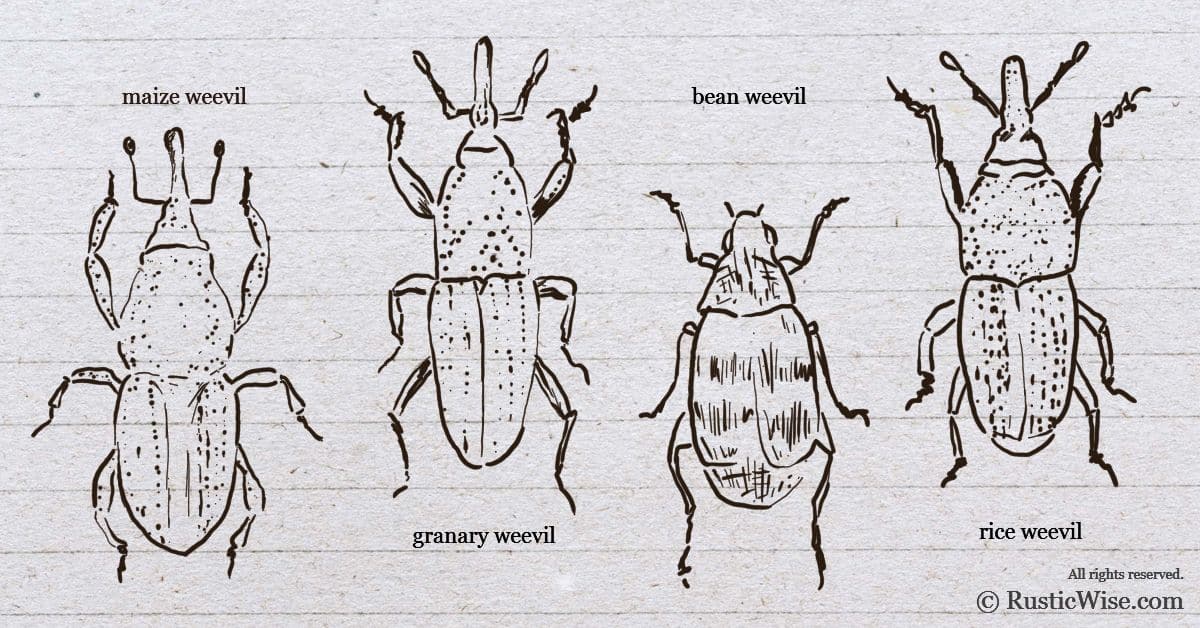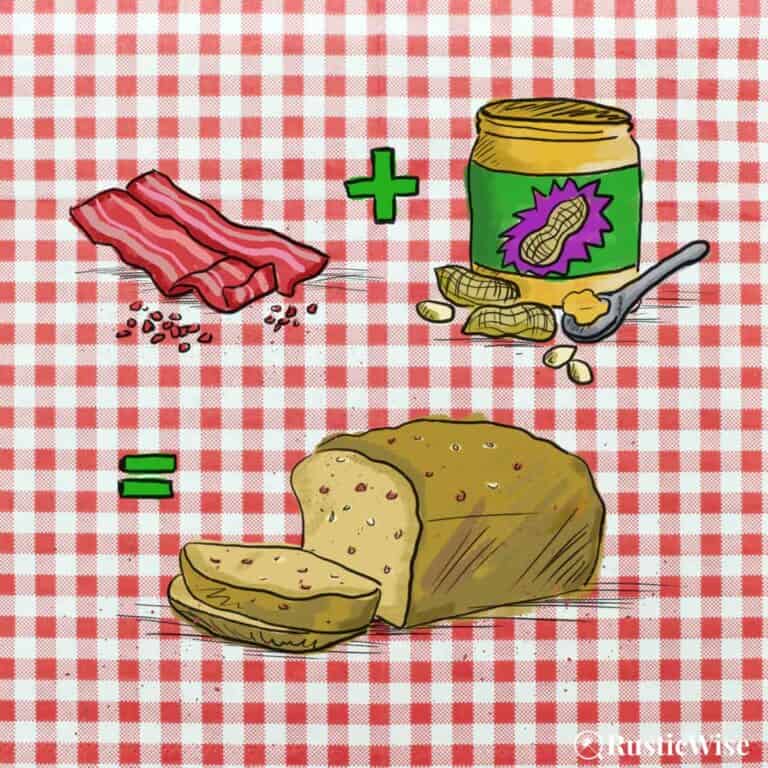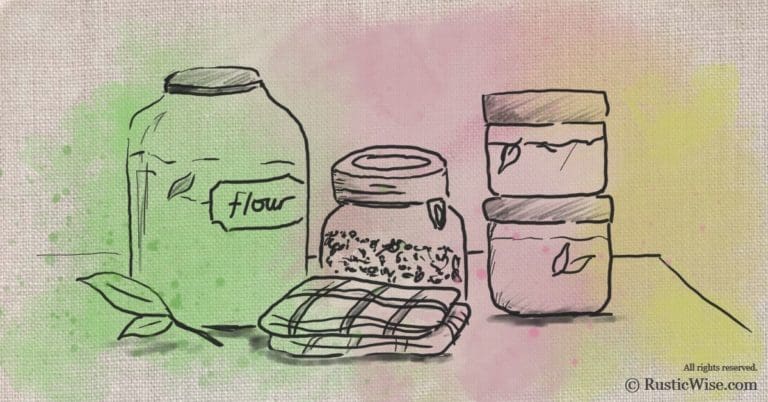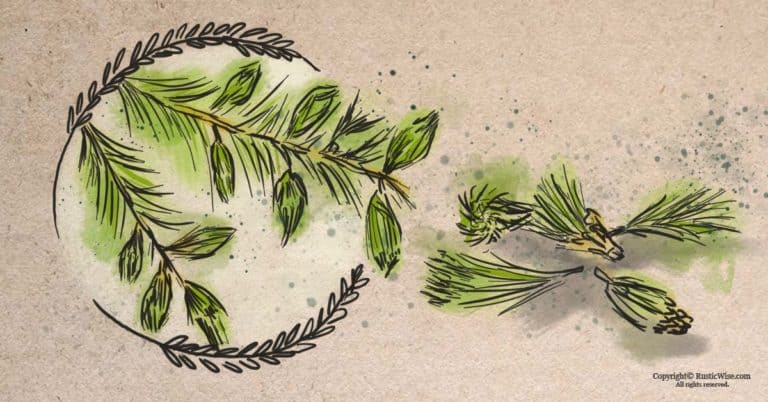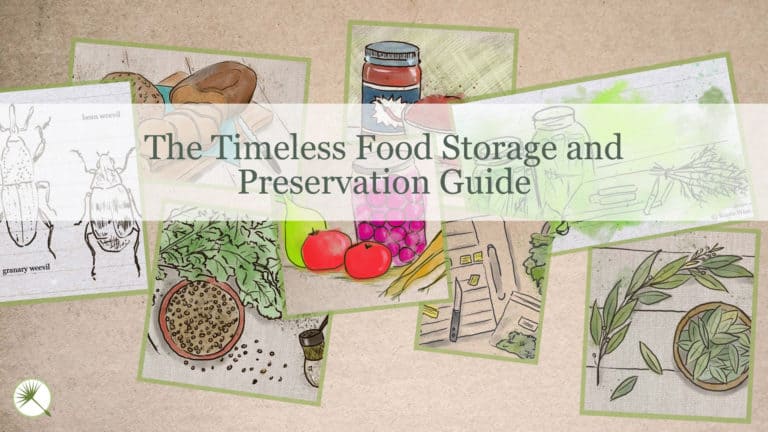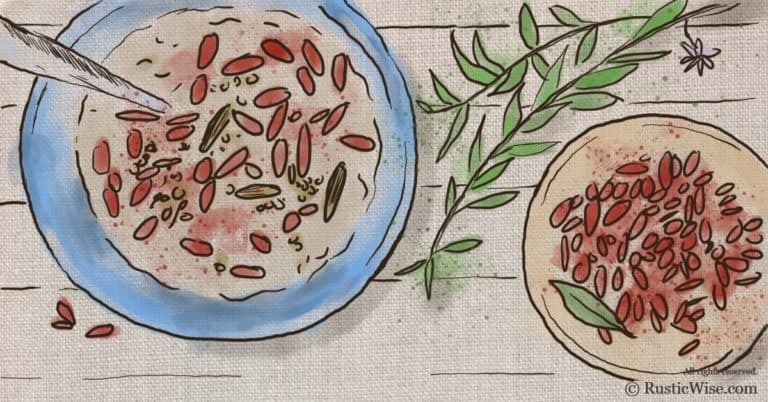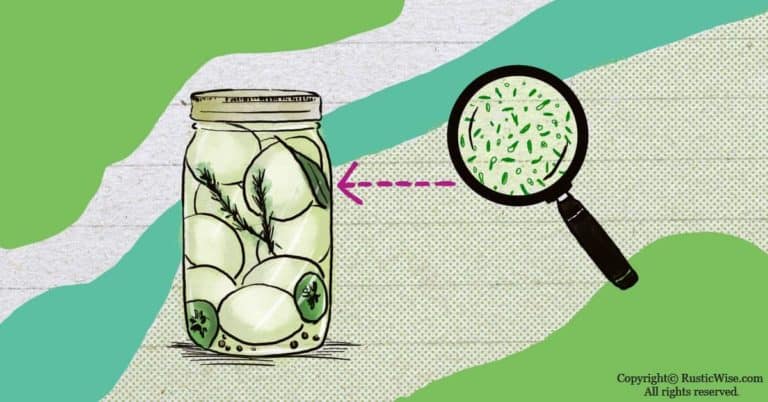What Do Weevils Look Like? A Closer Look at the Pests in Your Pantry
There’s something so unsettling about opening a box of cereal or pasta, or scooping up a cup of flour or rice to find little bugs inside. These little pests are most likely weevils.
So, what do weevils look like exactly? While there are many types of weevils, they are small black or reddish-brown insects, often less than 0.25 inch (6 millimeters). Their distinguishing feature is a pronounced snout and antennae.
Read on to learn more about commonly found pantry weevils including bean weevils, granary weevils (aka grain weevil or wheat weevil), maize weevils, and rice weevils.
Quick overview of pantry weevils
Weevils are members of the Curculionoidea family (also known as true weevils, or snout beetles), a type of beetle. There are around 97,000 species of weevils around the world.
Many types of weevils destroy crops and stored grains in large bins, while others find their way inside your home, particularly your pantry, and make a home amongst your stored food.
If you’ve had the unpleasant surprise of finding these pantry pests in your food, welcome to the club. These pervasive pests are common all around the world. While weevils are a nuisance, they aren’t harmful to human health and are unlikely to carry infectious diseases.
Having weevils in your pantry is not a sign of uncleanliness—it’s likely from improperly stored food. (Don’t worry, we’re not judging!) And sometimes, weevils are already present in your food when you bring it home.
Weevil size and shape
Weevils are small insects, typically less than 0.25 inch (6 millimeters). However, some are known to grow as large as 3 inches (80 millimeters). They range in color from black to reddish-brown. Weevils are usually cylindrical or pear-shaped.¹
Since there are so many species of weevils and corresponding families, and subfamilies, there’s a wide range in shape and color. However, a distinguishing common characteristic is their pronounced snout and antennae, or ‘feelers.’ Some species have short and bent antennae, while others are long and straight.
Their snout serves several important functions: it helps to penetrate certain foods which comes in handy when feeding; it also serves to bore holes in which they’ll lay eggs.¹
Need help identifying common pantry pests? Keep reading below!
What do weevils look like? A closer look at 4 common pests
So, what do weevils look like, exactly? Let’s take a closer look.
Main types of pantry weevils
Let’s take a closer look at the main types of weevils you might find in your pantry. Dig around in your dry goods and you might discover a few pests. A few common foods you might find these unwanted visitors in include:
- Rice
- Flour
- Grains (oatmeal, cereals, etc.)
- Pasta
- Corn
- Dried beans and seeds
- Dog food
Many people often refer to these insects as flour bugs or flour weevils, because they’re often found in flour bins, but they are actually one of the types of species listed below.
1. Granary weevil
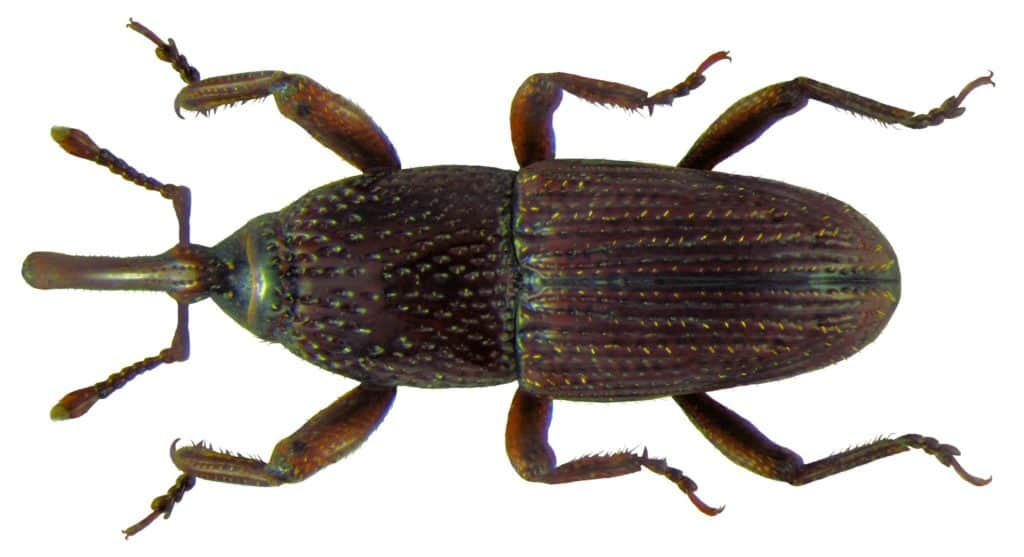
Credit: Udo Schmidt / Flickr, Sitophilus granarius.
Perhaps the most common type of weevil you’ll have the displeasure of finding is the granary weevil (Sitophilus granarius) also known as the wheat weevil, grain weevil, or grain beetle. Grain weevils cause extensive damage to agricultural crops and are a farmer’s nightmare. They are also a pervasive pantry pest.
Granary weevils are around 0.08–0.12 inch (2–3 millimeters) long with a polished, reddish-brown color. They have an elongated snout that is about one-quarter the length of its entire body. Granary weevils, unlike its relatives the rice and maize weevils, cannot fly.²
Adult females bite a hole in a single grain kernel where she lays an egg and seals it up. The egg then undergoes the larva and pupa stages until the young weevil bites its way out to emerge from the kernel.
Females lay 50 to 200 white eggs during their lifespan. The eggs and larvae easily blend into grains making it nearly impossible to see.²
2. Rice weevil
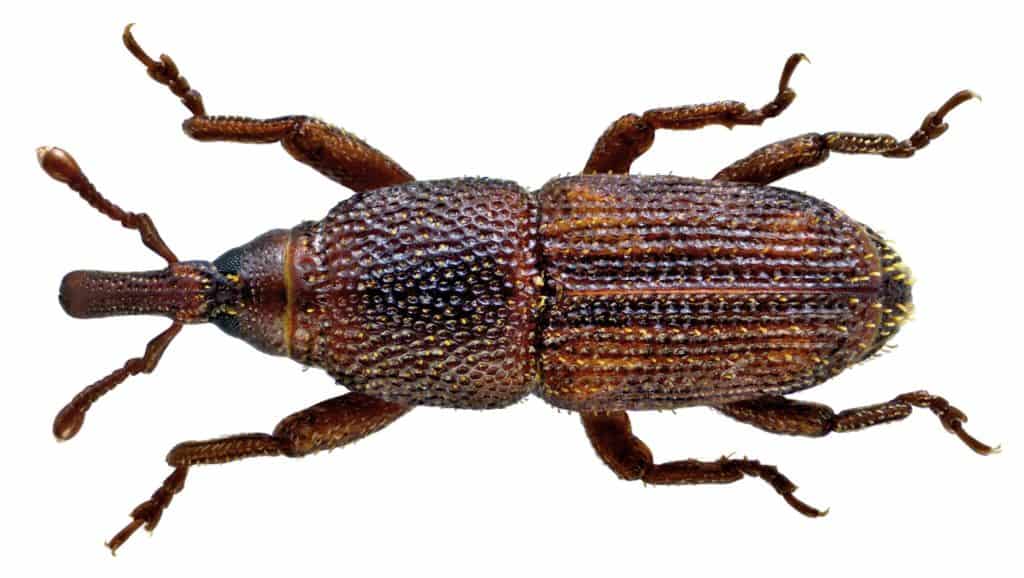
Credit: Udo Schmidt / Flickr, Sitophilus oryzae
The rice weevil (Sitophilus oryza) can fly, which allows it to travel and spread more easily. It’s around 0.11–0.18 inch (3–4.6 millimetres) long. They have a dull reddish-brown to black color with four spots on its back that can be red or yellow. As the name suggests, rice weevils feed on rice grains.
Similar to the granary weevil, rice weevil eggs are also deposited inside a kernel of grain to emerge later as an adult. Females lay 300 to 400 eggs during their lifespan.²
Hot weather can speed up the development of eggs while cool weather can prolong it. On average, it takes 26 days from egg to pupa stage.
3. Maize weevil
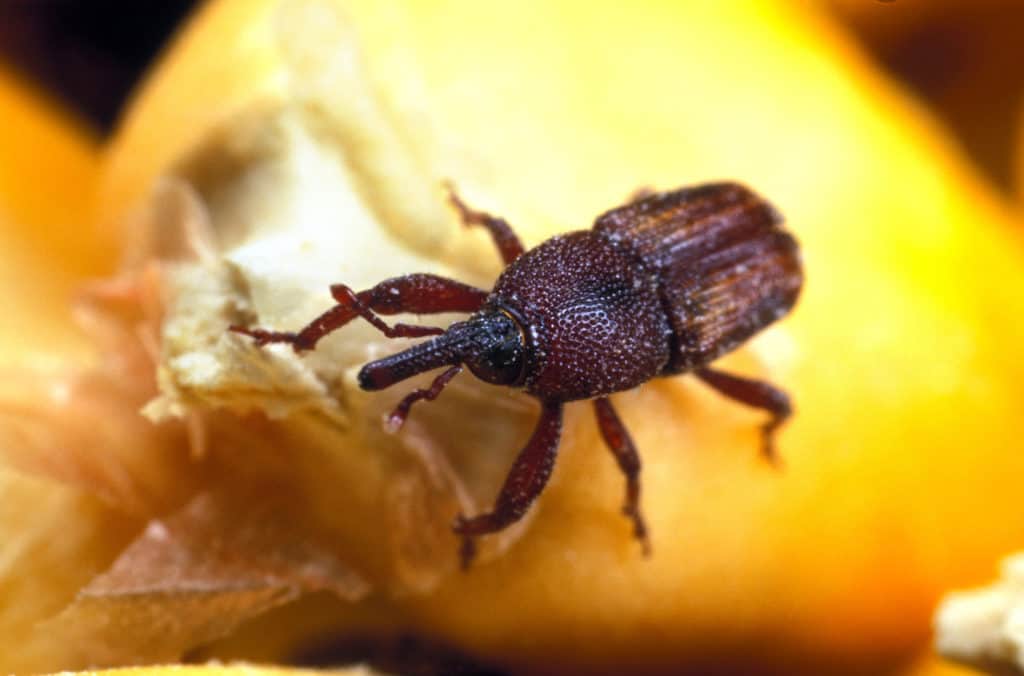
Credit: USDA / Flickr, k3980-17
Just like the rice weevil, the maize weevil (Sitophilus zeamais) has fully developed wings enabling it to fly. You might find the maize weevil in your box of pasta, or cereal.
It ranges in size from 0.09–0.19 inch (2.3–4.9 millimeters). With a smaller snout than the granary weevil, it has a dull reddish-brown to black color. The thorax is pitted with a smooth thin strip running down its dorsal. While very similar to the rice weevil, the maize weevil is often slightly larger.
Like its other relatives, the maize weezil also chews a hole through a kernel of grain to lay an egg.
The maize weevil has a slightly longer development period than the rice weevil taking at least 30 days to go from egg, to grub, to pupa, and finally emerges as an adult weevil.
4. Bean weevil
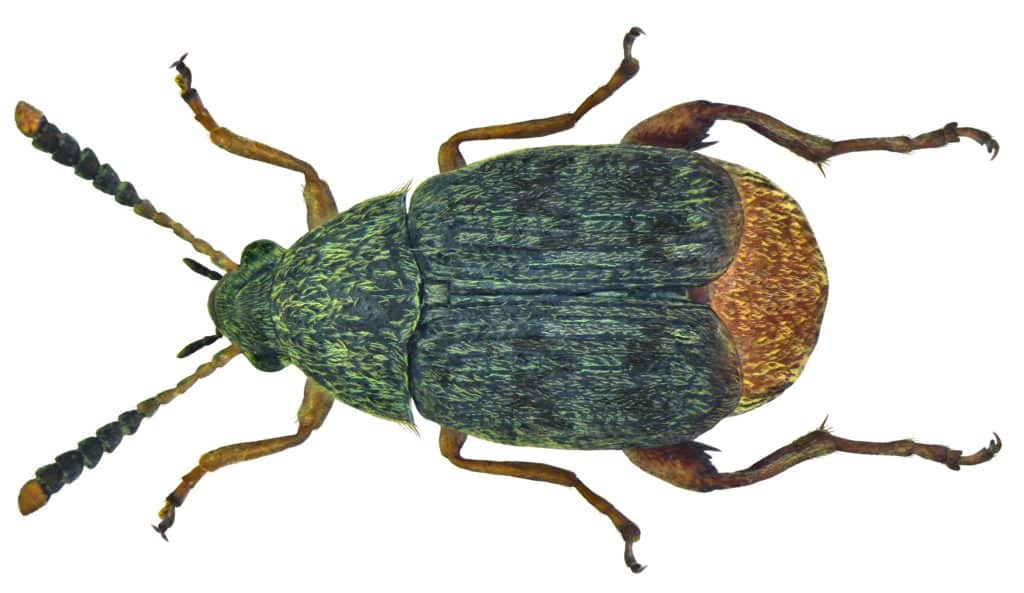
Credit: Udo Schmidt / Flickr, Acanthoscelides obtectus
While called a “weevil” the bean weevil (Acanthoscelides obtectus) is actually classified under the beetle family Chrysomelidae. As such it doesn’t have the long snouts characteristic of other “true weevils.” It also has a tucked-under head. You might find these insects inside your pantry feasting on dried beans or seeds.
Ranging in size from 0.04–0.87 inch (1–22 millimetres), bean weevils are either dark brown or black with a distinct mottled pattern. The females lay eggs onto seeds. As the larvae develop, they bite into a seed and make sure to leave an exit for later.
Fun fact: An interesting trait of adult bean weevils is that they curl up and play dead when they’re disturbed.
How did weevils get in my pantry?
Some types of weevils make their way into your home through cracks in walls, doors, and windows when the weather gets too hot or dry outside. Others come home with you undetected as eggs, weevil larvae or pupae hidden inside kernels of rice, grains or seeds.
Granary weevils in particular have become especially well adapted to making their homes inside large storage containers where they are packaged and shipped to grocery stores and brought home by unwitting hosts.³
Want to swear off eating all forms of grains and seeds forever? While it’s disgusting to think that we’re unknowingly eating weevil eggs, or larvae, it’s important to remember that most food products likely carry some insects. After all, it’s almost impossible to filter out all insects during harvesting, processing, packaging, and shipping.
Do weevils bite people?
Don’t worry. While they’re definitely a nuisance, weevils don’t bite or sting humans, or household pets. They prefer to bite into your stored pantry goods, thank you very much.
Using heat or cold to kill weevils
If you’ve removed the adult weevils in your pantry and are still concerned with any eggs or larvae left behind, don’t bother trying to search in, say, a bucket of rice. They are so small and camouflaged so well. A better method would be to use heat or cold to kill the larvae.
Try freezing food for a minimum of four to seven days. Or, try placing grains in an oven at 140 degrees Fahrenheit for 15 to 20 minutes.⁴
And if you’re still not feeling confident, you can just throw the food out.
👉For more tips on weevils, check out our post on getting rid of weevils naturally.
Related questions
Are bean weevils harmful to humans?
Bean weevils are not harmful to humans (or other animals) as they don’t bite, sting, or transmit any diseases. However, they can cause damage to stored food products such as beans, peas, and lentils, making them unfit for consumption. They can also destroy crops.
It’s important to properly store and inspect food products to prevent infestations by bean weevils and other pests.
Do rice weevils bite humans?
No, rice weevils do not bite humans or pets. They primarily feed on grains and other food products, and do not pose any harm to humans.
What’s a boll weevil?
Boll weevils feed on the cotton plant and flowers, so you shouldn’t have any problems with them in your pantry. But they can do massive damage to cotton crops.
How do you know if you have vine weevil?
Vine weevils like to feast on potted ornamental plants and some fruits. There are a few signs to look for in your container garden:⁵
- Irregular shaped bites along leaf edges: Adult weevils leave telltale “notches” along the edges of foliage.
- Wilting plants: The tiny weevils during the grub stage like to gather around the base of the plant and eat the roots. This causes massive root damage, and your plant could look wilted.
👉 If you like this post, see our Rustic Kitchen section. 🍽️
Would you like more timeless tips via email?
Fun tips to help you live an independent, self-sustaining lifestyle. Opt-out at any time.


References
- Britannica, Weevil, insect, https://www.britannica.com/animal/weevil. Accessed April 2023.
- PennState College of Agricultural Sciences, Insect Advice from Extension, Weevils on Stored Grain, https://ento.psu.edu/extension/factsheets/weevils-on-stored-grain. Accessed April 2023.
- Patterson, Lindsay (8 January 2019). “Meet The Granary Weevil, The Pantry Monster Of Our Own Creation,” NPR. Accessed April 2023.
- Terminix, Pest Control, What Do Weevil Eggs Look Like?, https://www.terminix.com/pest-control/weevils/life-cycle/larvae/. Accessed April 2023.
- The Royal Horticultural Society, Vine weevil, https://www.rhs.org.uk/biodiversity/vine-weevil. Accessed April 2023.

Author: Theresa Tesolin
Theresa is co-founder of RusticWise. She helps people unleash their inner DIY spirit by encouraging them to get dirty and make or grow something from scratch.

